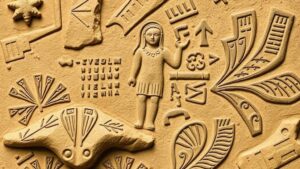Prompting AI to Combine Early Industrial Data with Modern Geological Maps
Prompting AI to Combine Early Industrial Data with Modern Geological Maps
This research article explores the potential for artificial intelligence (AI) to enhance the integration of early industrial data with contemporary geological mapping. With the rise of AI technologies and the increasing availability of historical datasets, it is crucial to understand how these tools can improve geological analysis and historical context, facilitating better resource management and environmental assessments.
Introduction
Early industrial data, such as mining records and factory outputs, provide invaluable insights into past economic activities and geological conditions. Still, these records often exist in disparate formats and locations, making their amalgamation with modern geological maps a challenging endeavor. AI offers innovative solutions to overcome these barriers, enabling the synthesis of historical information with current geological surveys to yield richer data interpretations.
Historical Context of Industrial Data
The Industrial Revolution, spanning from the late 18th century to the early 19th century, marked a significant transformation in production and resource extraction methods. For example, the coal mining industry in England experienced immense growth, with the first recorded deep mine, the Welbeck Colliery, established in 1815. Such historical records are crucial for understanding the geological characteristics of the regions impacted by industrial activity.
But, much of this data is fragmented. A report by the UK Royal Society highlights that less than 30% of early industrial records are currently digitized, posing a major hurdle for conducting comprehensive analyses (UK Royal Society, 2020).
Modern Geological Mapping
Todays geological maps utilize advanced technologies like Geographic Information Systems (GIS) and remote sensing. These tools can convey detailed insights regarding mineral deposits, soil types, and structural geology. For example, the United States Geological Survey (USGS) provides digital geological maps that reflect modern mapping technologies and approaches, offering high-resolution details essential for planning and development.
The Role of AI in Data Integration
Artificial Intelligence, particularly machine learning algorithms, can be employed to automate the process of integrating diverse datasets. By leveraging natural language processing (NLP), AI can read and interpret historical documents, extracting pertinent information and converting it into data points compatible with modern GIS systems.
- Data Extraction: Using NLP, companies like OpenAI have successfully extracted structured data from unstructured texts.
- Pattern Recognition: Machine learning models can identify trends and correlations between early industrial activities and geological changes.
For example, a recent study conducted by researchers at Stanford University applied AI to analyze historical mining records in Nevada. The study illustrated that integrating these records with modern geological maps delineated previously unnoticed mineral deposits, leading to new exploration opportunities (Stanford University, 2023).
Challenges and Limitations
Despite the promising capabilities of AI, several challenges persist in integrating early industrial data with modern geological maps:
- Data Variability: Early data records often vary in format, accuracy, and completeness.
- Data Privacy: Some historical data may involve sensitive information that impacts the feasibility of its use.
- Technical Expertise: The lack of technical skill in interpreting AI-generated outputs can hinder effective application.
A survey conducted by the Geological Society in 2022 indicated that nearly 40% of geologists report difficulties in adapting their workflows to new technological tools, demonstrating a significant knowledge gap in utilizing AI effectively (Geological Society, 2022).
Real-World Applications
Combining early industrial data with modern geological maps through AI can revolutionize several sectors:
- Resource Management: Organizations can better assess resource availability by understanding historical extraction methods and sites.
- Environmental Restoration: Insights from historical industrial practices aid in better modeling of environmental remediation efforts, particularly in areas impacted by mining.
- Urban Planning: Enhanced geological data can guide urban developers in site selection, mitigating risks related to geological hazards.
Conclusion and Future Outlook
The integration of early industrial data with modern geological maps using AI offers significant potential to improve geological assessments and support sustainable resource management. While challenges exist, the ongoing advancements in AI technology present opportunities for overcoming these hurdles. It is essential for stakeholders, including governments, academic institutions, and industry leaders, to collaborate in facilitating the digitization of historical records and investing in training programs that build AI competencies.
As we move forward, the emphasis should be placed on fostering interdisciplinary research that encompasses geology, computer science, and history, paving the way for innovations that harness the true potential of data integration.
In summary:
- Leverage AI technologies for data integration to enhance geological knowledge.
- Invest in the digitization of early industrial records to make historical data accessible.
- Foster training and development in AI applications within geological sciences.
These steps will not only facilitate the modernization of geological practices but also support heritage preservation through informed, sustainable development strategies.


